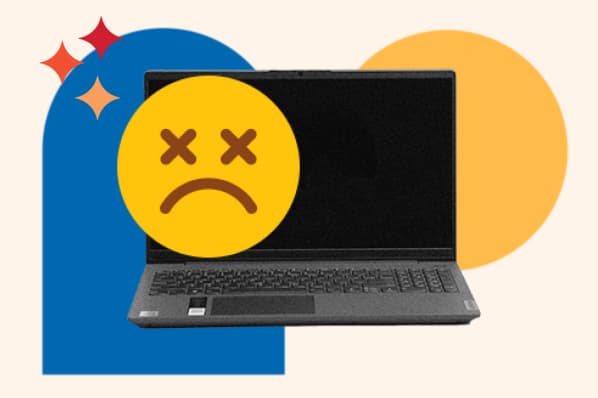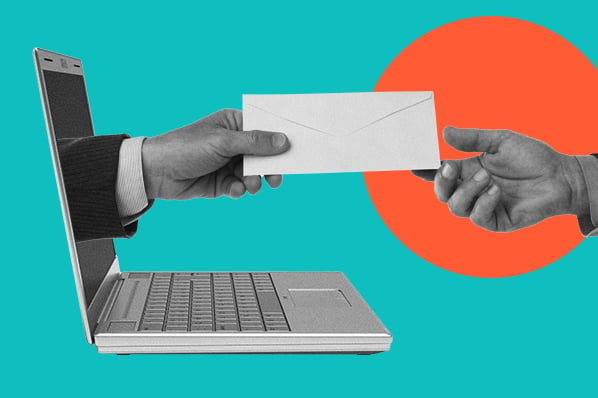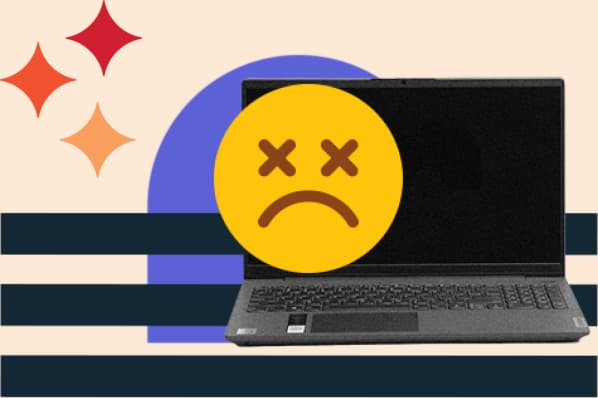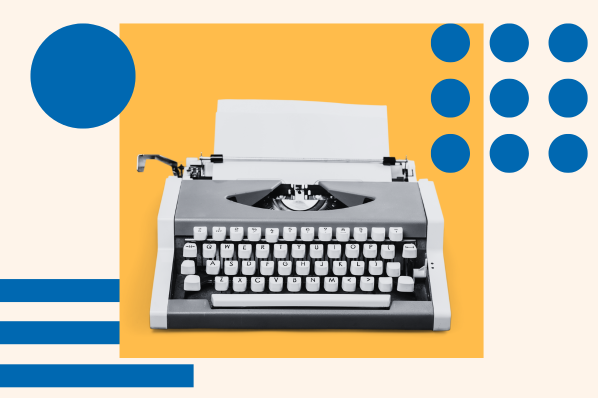As a salesperson, one of the most important skills you can possess is being a solid writer.

Learning to write "copy" (also known as persuasive writing) is a specific and useful skill for every sales and marketing professional.
All salespeople should have at least a basic understanding of essential copywriting principles to implement in their day-to-day emails and communications.
Here are seven specific copywriting hacks you can use to improve persuasion and performance of your sales emails and beyond.
7 Copywriting Hacks for Salespeople
- Use active verbs instead of ‘be’.
- Put your last paragraph first.
- Personalize your subject lines.
- Don’t be a thesaurus rex.
- Understand the hierarchy of information.
- Use the ultimate power word: you.
- Write the way you speak.
1. Use active verbs instead of "be".
Remember your state-of-being verbs you learned in grade school? Am, is, are, was, were, be, being, been.
I bet you can still recite them, but they weaken cold emails and sales prospecting.
Erase those "be" verbs and let the action verbs give your writing a more confident tone.
The Hack
Here’s a quick tip to make editing this even easier. Press command+F (Mac) or CTRL+F (Windows) to search your document or email. Type in those state-of-being verbs like "be" or "is" and remove them — leaving just the active verb that followed.
Adjust your sentence as needed for grammar. Your writing will immediately read smoother, and sound more confident.
Let’s say you had a sentence that read:
"We’ve been writing blogs for the past two years, and the results have been amazing."
You would edit this sentence to say:
"We’ve written blogs for the past two years with amazing results."
2. Put your last paragraph first.
Many people write toward an idea or ask, instead of getting right to the point. When teaching undergraduate students, I would often encourage them to switch their first and last paragraphs. Sales emails can work the same way.
If your goal is to qualify someone, your real goal is to disqualify others—as soon as possible. You want to spend your time on the warmest, most qualified prospects.
The Hack
Open with your question, or the main point of your email. You can often accomplish this by swapping your first and last paragraphs, even if they’re just one sentence long.
Instead of leading up to an ask, say what you’re asking for up front. Assuming they’re open to it, they’ll read on. Those are the people you want to spend your time talking with.
For example, if your initial sales email read:
Schyler,
I want to understand the high-level strategy behind your Google Ads spend.
My company makes software to help digital marketers optimize ad spend, generally for brands spending over 50K month on paid search alone, and it looks like you’re doing that every week.We use a proprietary AI tool that saves an average 17% on Google and Youtube ad spend while increasing results between 6% and 8%.
Can you explain your adwords strategy to me in a 10 minute meeting?
Sincerely,
Adam

You would change it to say:
Schyler,
Can you explain your adwords strategy to me in a 10 minute meeting?
I’m looking for the high-level concept of your Google Ads spend.
My company makes software to help digital marketers optimize ad spend, generally for brands spending over 50K month on paid search alone, and it looks like you’re doing that every week.We use a proprietary AI tool that saves an average 17% on Google and Youtube ad spend while increasing results between 6% and 8%.
Sincerely,
Adam

3. Personalize your subject lines.
All copywriters know this acronym: A.I.D.A. It stands for: Attention, Interest, Decision, and Action, and it’s the "Always Be Closing" of persuasive writing.
Sadly, many sales emails fall at that first hurdle in A.I.D.A. — attention.
To earn that click, go out of your way to personalize your email subject lines. Your open rates will trend upward.
The Hack
Do some due diligence on your recipient. If you are active on social media, especially LinkedIn Premium, search for your prospect and look for a single insight — their favorite team, TV show, or hobby.
Use that insight in the subject line to get their attention. It’ll stand out in their inbox.
Let’s use a real-life example looking at the snapshot of my inbox in the image below. The shortest subject line with my name at the beginning of the email is the one I’m clicking — it even uses a lyric from my favorite band.

4. Don’t be a thesaurus rex.
Business professionals tend to use synonyms when they’re not needed. We say things like "leverage" when we could just say "use".
People are rarely impressed by this, and depending on your industry, your recipients can be confused by your lingo.
The Hack
This trick requires an assistant. Have someone else read your email to you aloud, and pay attention to their eyebrows.
If their expression twists on a specific word in your email, that’s a word you need to simplify.
For example, if your sentence says:
"We’ve been working diligently toward creating a cultural synergy among our employees, but the acquisition has made it immensely difficult."
I recommend changing it to:
"We’re trying hard to merge company cultures, but some employees are still uneasy about the acquisition."
5. Understand the hierarchy of information.
Just like when you’re selling in-person or over the phone, you want to offer the most important information first. Copywriters instinctively write things from most important to least, because we think in terms of headlines and subheadings, and this line of thinking is helpful for salespeople as well.
The Hack
After you finish writing, rank each of your sentences on a scale of one through five with one being the least important and five being the most important. Put the corresponding number after the period.
Cut all the fours and fives, put all the threes at the bottom, and realize only one sentence is number one. This will prevent you from using too many words to say — or request — one simple thing.
Using another real-life example, look at the Hierarchy of Information in this newspaper from 1969.
- Men Walk On Moon. 1
- Astronauts Land on Plain; Collect Rocks, Plant Flag. 2
- Voice from moon: "Eagle has Landed." 3
- A Powdery Surface is Closely Explored. 3
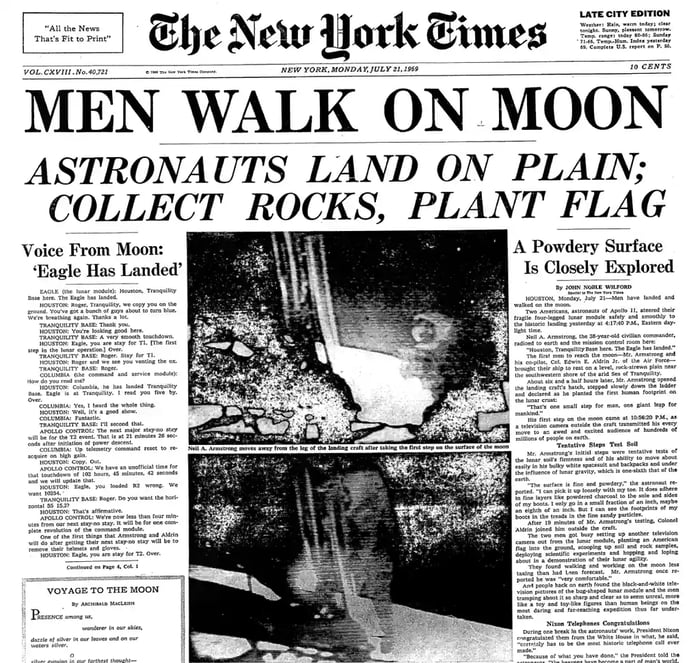
6. Use the ultimate power word: you.
You have to focus on the audience, meaning you’ll often find yourself speaking in second-person. Salespeople already know this, but perhaps haven’t translated it to writing.
"You could really save time using this," or "You’d look great in this," are both ways of speaking directly to the audience.
The Hack
Here’s a quick tip to ensure your writing is focused on your customer.
Press command+F (Mac) or CTRL+F (Windows) to search your document or email. Type in "I," then "me," then total the number of uses for those two. Do the same with "you" and "your."
"You" should always occur more than "I" in a sales email, so adjust that ratio as needed to focus on your audience. The example below shows an AE promoting new features to a customer.
If the initial message said:
"Have I mentioned our latest feature release includes an integration with HubSpot? I know HubSpot is your CRM.
It has already saved me a ton of time, and it’s really easy to use."
You would change it to:
"Since you use HubSpot, you should update to the latest version of our software. It’ll let you integrate the two nicely.
You’ll like it."
7. Write the way you speak.
Which tagline is better?
"We know a thing or two, because we’ve seen a thing or two."
Or,
"Impossible is nothing."
You might be surprised to know the copywriter’s answer. The first is perhaps one of the best taglines in recent branding history from Farmer’s Insurance.
The second tagline, from Adidas, is infamous for being written backwards. Decades later, copywriters still use it as an example of what not to do when writing a tagline.
Remember: the more you try to be deep, profound, or clever, the more you’ll confuse the average reader. Keep a conversational tone.
The Hack
Before you hit send, read your email aloud. Literally speak the words out loud like a practicing actor reading from a script.
By pronouncing all the words you’ve written, you’ll hear what sounds unnatural to the person reading it for the first time.
If you sound like a knight in shining armor, or a Bond villain, you need to revisit your word choices and syntax (the order of your words). Replace the confusing instances with more casual speech and your cold emails will be received more warmly.
For example, if your initial email read:
Hey Jenny,
Just thought I’d circle back and see if you had a chance to review those slides I sent over.
There’s also a video embedded in slide three (3) that really suits your sense of humor.
All the Best,
Adam

You could change it to:
Hey Jenny,
Not sure if you saw those slides but they’re attached to my last email.
If nothing else, check out the video on slide three. You’ll get a kick out of it.
Take care,
Adam

By using even two of these copywriting hacks, your sales emails and prospecting will improve in measurable ways.
To achieve better results, seek to understand what metrics line up with what copy. For example, open rates are impacted by your subject lines. Experiment with what resonates best with your audience to find what works for you. For instance, you can A/B test your meeting request at the top vs. the bottom of an email to see what gets better results.
By using these tried and tested techniques, you’ll improve your cold email prospecting, your open rates, and your communication as a sales professional.
![Download Now: 25 Sales Email Templates [Free Access]](https://no-cache.hubspot.com/cta/default/53/be67aa79-8dbe-4938-8256-fdf195247a9c.png)
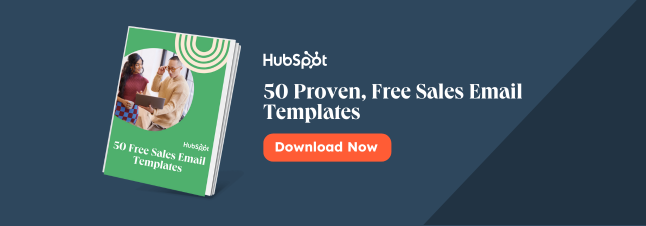


![23 Sales Email Templates With 60% or Higher Open Rates [+ Bonus Templates]](https://blog.hubspot.com/hubfs/sales-email-templates-2.jpg)

